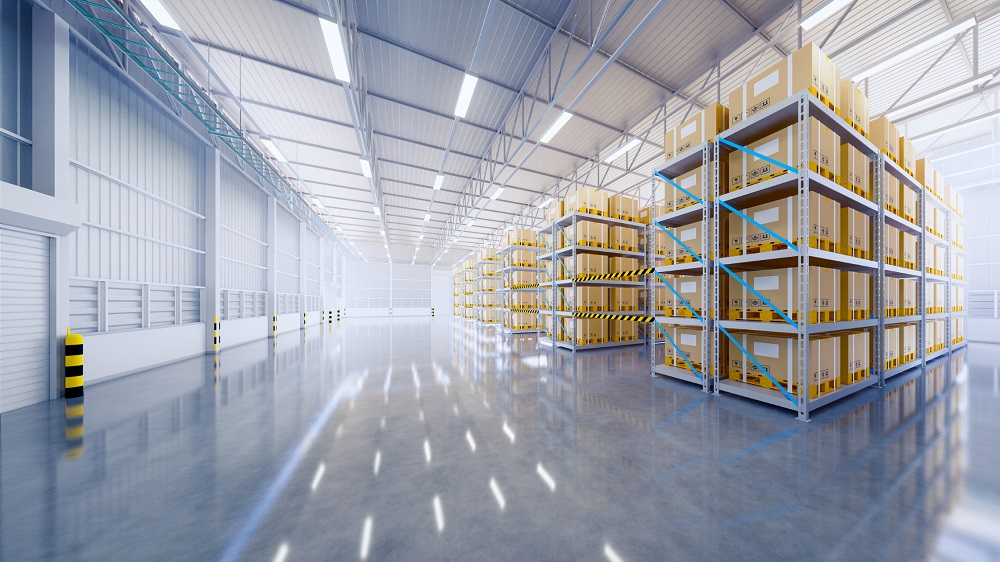Abu Dhabi is the capital of the United Arab Emirates. It is one of the leading logistics capitals in the world, located in the middle of the Gulf Cooperation Council countries.
What is attractive about Abu Dhabi is how it mixes modernity with heritage. It sets a role model for other global digital capitals. If you do not know how the Emirati contribute to the shipping and logistics industries, never miss out on these facts about Abu Dhabi:
The largest city in the UAE includes a vast network of routes for international freight services covering sea, land, air, and even rail freight. Because of its economic strength and digital capabilities, the city is the safest environment for investment opportunities.
Abu Dhabi excelled in many indicators, including quality of life, communications, credit rating, and economic growth. It demonstrated strong leadership in the green economy and renewable energy to reach climate neutrality.
Abu Dhabi as a global logistics hub
Abu Dhabi has invested in its transport and logistics infrastructure to remain globally competitive. We can observe the city's excellence in its overall facts and figures.
The city contains 11 leading ports that support over 210,000 jobs in the UAE and contribute to the non-oil GDP with +AED 85.6 billion of the total GDP.
Moreover, Abu Dhabi Ports handles more than 22.5 million tons of general and bulk cargo annually. It registered the fastest truck turnaround time of 12 minutes.
Abu Dhabi reaped +60 global awards for being a leading example of digital cities and shipping centers. That helped ease domestic accessibility and strengthen trade flows. The factors supporting that improvement include:
➔ Strong Economic Performance: The economic growth expectations for the capital range between 6% and 8%. That allows Abu Dhabi to invest in the existing infrastructure and digital migration. The outstanding economic performance of the city helped establish industrial parks, warehouses, cold storage, and advanced transportation.
➔ High Security: According to the Safe Cities Index 2021 issued by the Economist Intelligence Unit, Abu Dhabi topped the list of the safest cities in the Middle East and Africa, scoring 66.9 points.
➔ Smooth Networking: Abu Dhabi offers fast, reliable, and frequent services to transport exports and imports while complying with the latest and strictest safety requirements. The stable environment allows for easier logistics operations of different modes of transport and facilitates multimodal solutions. It also offers smooth regulatory and technological measures related to cargo handling and customs-related processes.
➔ Coordinated Communication: Effective internal communication further helped the city establish governance agreements, such as the recent agreement between the General Administration of Abu Dhabi Customs and the Abu Dhabi Agriculture and Food Safety Authority. The agreement coordinates the workflow between the two entities to facilitate customs inspection procedures and reduce the time for food cargo clearance to 30 minutes. Such agreements positively affect logistics operations and commodity trade in Abu Dhabi. It has also enhanced the preventive measures taken regarding food safety and biosecurity.
➔ Massive Digital Transformation: The UAE capital, Abu Dhabi, is the third fastest capital in the world on the "Ookla global index" of 5G networks. This strong and fast infrastructure supports digital operations in shipping and logistics. These digital operations include uses of the Internet of Things, robotic and autonomous processes, electronic customs clearance, and tracking cargo.
➔ Reliance on sustainable energy: In 2019, the Department of Energy launched the "Abu Dhabi Emirate's Strategy for Energy Rationalization 2030" program. The program helped reduce the emissions of approximately 3.2 million tons of carbon dioxide. It saved, in the short term, 400 million dirhams. That reliance on sustainable energy goes in line with the sustainable shipping policies of the UAE that promote carbon offsetting.
The city managed to create efficient ports, airports, and logistics facilities. They also helped facilitate the logistics processes. We list below the leading ports and airports Abu Dhabi developed to help maintain the global supply chains.
Leading Airports in Abu Dhabi:
Abu Dhabi International Airport
Abu Dhabi International Airport (AUH) is one of the world's fastest-growing airports, serving more than 96 global destinations.
To satisfy this increased demand, Abu Dhabi Airports has started work on the future Midfield Terminal Complex (MTC), which will include cargo and catering facilities, utilities, and logistics-related infrastructure.
The airport handles over 500,000 tons of cargo annually through Al-Etihad Airlines, the national carrier of the UAE.
Al Ain International Airport:
Abu Dhabi’s second airport earned international acknowledgment as a digital hub of innovation through its partnership with Mubadala Aerospace; Abu Dhabi Airports Group and Mubadala developed the UAE's first aerospace center in Al Ain in 2008.
Leading Seaports in Abu Dhabi:
The leading shipping ports in Abu Dhabi are global and regional centers that contribute significantly to trade growth and economic diversity. They include:
Zayed Port:
For 40 years, Zayed Port was the major general cargo port of Abu Dhabi. The seaport serves as a terminal for cruise ships, in addition to shipping general and bulk cargo.
Mussafah Port:
Mussafah Port is the second oldest port in Abu Dhabi after Zayed Port. It is located on the Musaffah Canal. The canal extends for 53 km with a maximum width of 200 meters and a depth point of 9 meters. It allows for the two-way movement of large Panamanian-class ships for bulk cargo.
The port is equipped with tugs to assist in routing and docking operations. Musaffah Port caters to general cargo operations, including bulk and ro-ro cargo.
The advanced warehouses for the various industrial and trade sectors around Musaffah port include steel, drilling, shipbuilding, and onshore construction.
AL-hurr Port:
Al-hurr Port was established in 1978. It provides cargo handling and logistics services to support projects under development in the small islands of the UAE.
Al-hurr port meets the needs of small ships, tugs, barges, and service boats. It handles general and bulk cargoes besides supporting many marine operations and activities such as ship refueling, maintenance, painting, crew exchange, and diving.
The infrastructure of the Al-hurr port can handle heavy cargo due to the strength of its berth, which is capable of carrying a load of 4 metric tons per square meter.
Fujairah Port:
Fujairah Port benefits from its strategic location. It is expected to possess the capacity to handle one million standard containers ( TEUs ) and 700,000 tons of cargo annually by 2030.
The port handles containers, general cargo, ro-ro, and cruise ships. It offers comprehensive warehousing, logistics, and transportation solutions.
Abu Dhabi Ports Group plans to use the port of Fujairah to enhance intra-regional trade in vital sectors such as steel, spare parts, and food. In addition to being a regional headquarters for the plastics sector.
Shahama port:
It is a center that brings together the services and benefits for all users of boats and small yachts.
Abu Dhabi Ports is currently redeveloping Shahama Port into a major multi-use port. It is considered the largest integrated port for recreational ships, with sites equipped to unload boats and water bikes. Its water and dry berths help receive more than 500 boats, with a length not exceeding 100 feet.
Khalifa Port:
Khalifa Port is located halfway between Dubai and Abu Dhabi and is considered the first semi-automated seaport in the Middle East and North Africa. This port is built on more than 2.7 square kilometers. It enjoys an advanced infrastructure that makes it one of the most technologically advanced ports in the world.
Khalifa Port ranked fifth among global container ports in terms of container handling.
It serves approximately 25 shipping lines with direct connections to 70 foreign destinations. It also has a multimodal transportation network. This network allows for efficient transportation and logistics by sea, land, and air.
The port will be the first in the UAE linked to the newly constructed Etihad Rail network. Besides, It is the primary entrance to the Khalifa Industrial Zone Abu Dhabi (KIZAD).
The Khalifa Industrial Zone is the region's largest industrial park. It encompasses about 420 square kilometers of advantageous industrial areas.
Khalifa Industrial Zone Abu Dhabi (KIZAD)
KIZAD is Abu Dhabi's integrated trade, logistical, and industrial base. It is a strategic part of Abu Dhabi's economic vision. It raises the bar for industrial zone infrastructure, ecosystems, and operations.
The zone aims to establish a sustainable knowledge-based economy and strengthen Abu Dhabi's global competitiveness. KIZAD offers unrivaled benefits, including:
● Large spaces
● Advanced infrastructure
● Free zone
● Domestic industrial zone solutions.
● Specialized investment assistance
● Tax-free area with low operating expenses.
● Strategic position with access to regional and worldwide markets.
That makes it a port-integrated industrial zone of manufacturing, logistics, and trade across several industries. KIZAD provides accessibility to suppliers and customers. Its location near Khalifa Port allows multimodal access by sea, air, road, and rail networks. KIZAD encourages trade and investment by offering internal transit, water, and electrical power at cost-effective rates.
Given the advanced infrastructure and capabilities mentioned above, the concerted efforts of Abu Dhabi authorities have rooted the city in the dynamics of globalization. Its logistical skills in terms of time and space management keep the global trade of vital goods moving regardless of the global challenges.


